Table of contents
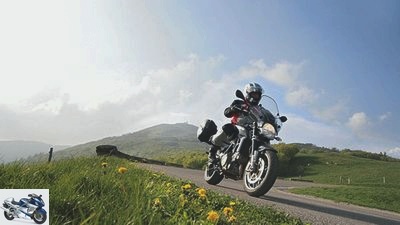
Breakable
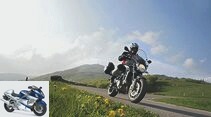
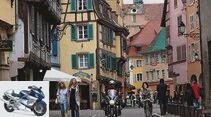
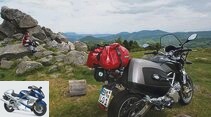
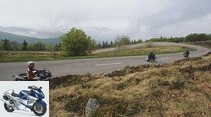
14th pictures
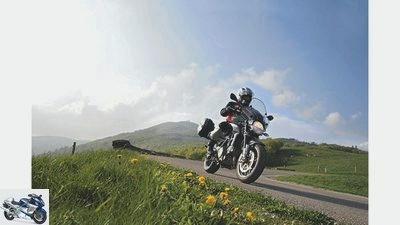
Breakable
1/14
Why always go to the Alps? The closer Alsace in France also offers beautiful landscapes and winding roads that don’t have to hide.
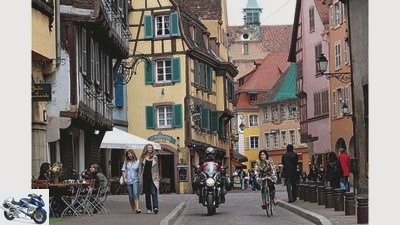
Breakable
2/14
Experience wonderful urban culture in Colmar.
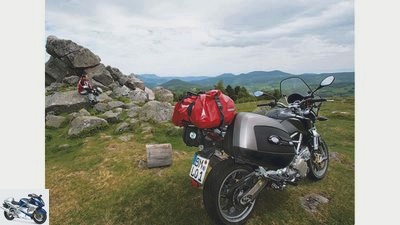
Breakable
3/14
The wild Alsace heights in front of Munster invite you to take a break and look at everything in peace.
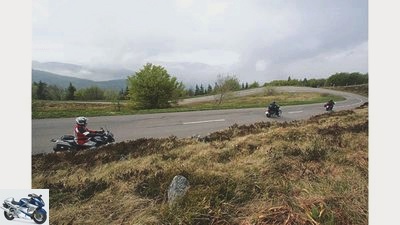
Breakable
4/14
Eating curves on the Grand Ballon, one of the many mountains in Alsace.
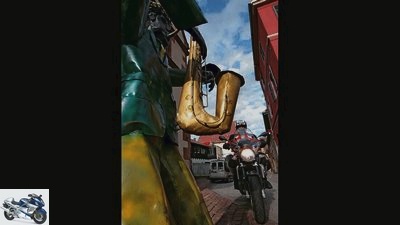
Breakable
5/14
Munster: Not only storks and cheese, but also art is loved.
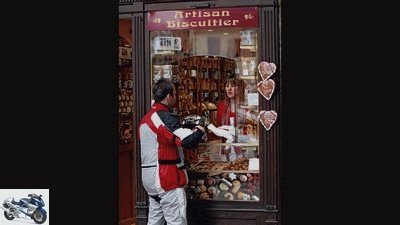
Breakable
6/14
Colmar: Eating a healthy diet or losing weight definitely doesn’t work here.
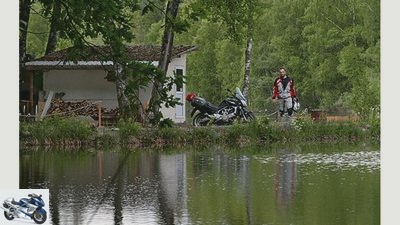
Breakable
7/14
A short break to put your feet in the water.
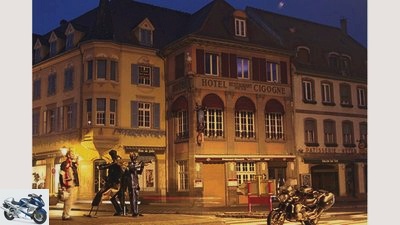
Breakable
8/14
The basis for sparkling pleasure in curves: Hôtel de la Cigogne in Munster.
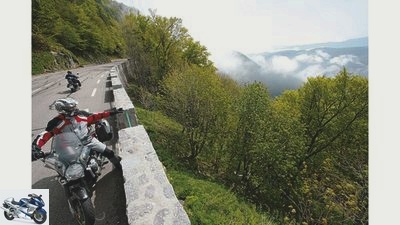
Breakable
9/14
Col panorama between the gorge and Hohneck.
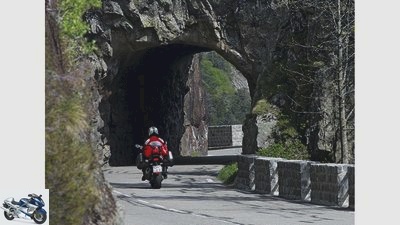
Breakable
10/14
Col de la Schlucht, the second: wild roads and deep gullies.
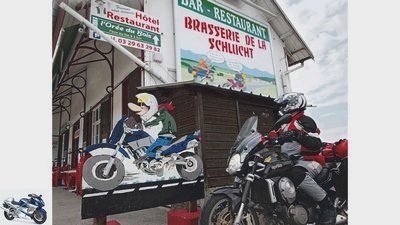
Breakable
11/14
Col de la Schlucht, the first: Joe Bar is already here.
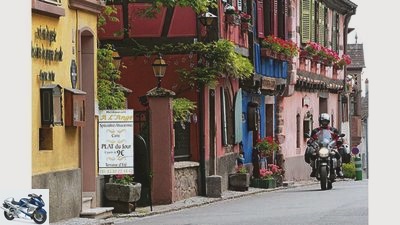
Breakable
12/14
Obermorschwihr is a typical Alsatian place with good restaurants.
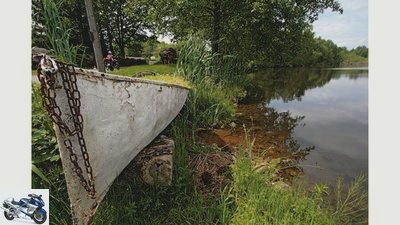
Breakable
13/14
At the same time you find yourself back in the idyll of a thousand lakes.
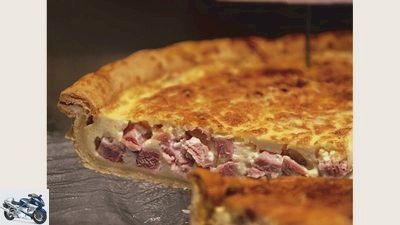
Breakable
14/14
Like God in France: enjoy intact nature and culinary delights.
to travel
On the go: France: Alsace, Vosges, 1000 lakes
Traveling
Alsace, Vosges and the 1000 lakes region
If you can’t make it into the Alps, Col du Bonhomme, Col de la Schlucht, Grand Ballon and other peaks in nearby Alsace promise pure cornering happiness. In addition: Flammkuchen at its finest and a wildness that can only be explored by bike.
Markus Biebricher
05/27/2010
Weather-beaten face, blue eyes, blond curls clinging to the skull. It is not sweat that drips from the pores, but gasoline. That’s how Steve stands before us. Behind them his seven buddies in oil-smeared leather, all of whom thundered from England to Munster in Alsace with toothbrushes and credit cards. The members of the British Aprilia Club point to our Aprilia Mana, who shyly ducks between refined RSV and Tuono. “How is the automatic transmission?” We try to pack 700 kilometers of mana experience into two minutes of speech. As the British start their two-cylinder engines, the conversation revolves around curves. It is agreed that Munster in Upper Alsace, famous for its soft cheese, is the best base for dynamic wandering over the mountain ranges of the Vosges.
Buy complete article
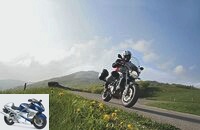
Traveling
Alsace, Vosges and the 1000 lakes region
7 pages) as PDF
€ 2.00
Buy now
A rattle reaches our ears. Valves? No, a stork colony has resided in Munster for over 30 years. The Adebare are not disturbed by the rumbling of the departing Italo-Boliden. Steve closes his helmet and says the Aprilia Club England has 1,000 members. The guys regularly pop through Europe and want at least some comfort for the nights.
This is how they came across the long-established Hotel la Cigogne (Zum Storchen). The menu features a sparkling Rose d‘Alsace Turckheim, an excellent tarte flambee with Munster cheese and the best creme brulee in Eastern France. Inspired by such pleasures, Claudia and I recapitulate our previous route: After a stroll through the picturesque old town of Colmar, we discovered the D 11, which meanders steeply to Les Trois Epis and on to Orbey. There the D 48 and the banks of Lac Noir and Lac Blanc, both lakes embedded in wild mountains, beckon. It goes without saying that we paid a visit to the Col du Bonhomme, just to see what motorbikes are there.
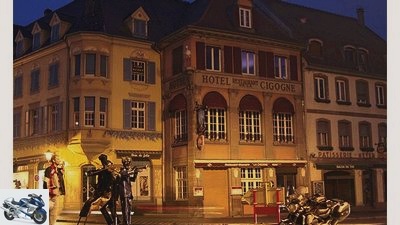
Breakable
The basis for sparkling pleasure in curves: Hôtel de la Cigogne in Munster.
Via one of several Routes des Crêtes (D 148, D 61), the Aprilia then pulled us over rough altitudes and moss-covered forests directly to the Col de la Schlucht, where a swarm of motorcycles could be seen cornering. On the way into the valley we slipped past lush cows. The raw material des is stored in their udders “Munsterkas”, which is made from raw milk and is now slightly melted into an intimate connection with the tarte flambee.
Anyone staying at the Hotel la Cigogne should like the clatter of storks. The tower on the south side of the Place du Marche serves as a nesting place, as does the roof of the neighboring former bishop’s palace. The animals live in their own world up here, they are just as uninterested in traffic noise as they are in sub-zero temperatures or heat.
This prevails the next day on our course, which leads in a serpentine direction towards the Grand Ballon. The small D 40 winds over the Col du Firstplan, then into the vineyards and small wine villages such as Voegtlinshoffen or Gueberschwihr. The life of the people revolves around the production of wine, one cares about the welfare of the still young vines. The soil is well drained, builds up on lime-rich conglomerates and marl from the Rhine Graben and produces aromatic Gewurztraminer, Riesling or Muscat wines. At some courtyard entrances, watchdogs practice calf snapping.
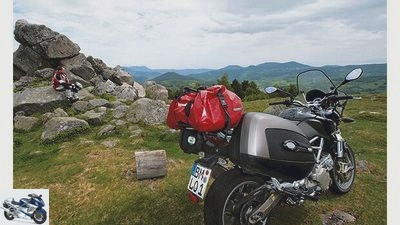
Breakable
The wild Alsace heights in front of Munster invite you to take a break and look at everything in peace.
The Aprilia sniffs out the tiniest of streets, soon it is rolling again on the D 40, this time via Soultzmatt to Lautenbach. A piece of the D 430, then D5 and the ascent to the highest peak in the Vosges at 1424 meters, the great Belchen (Grand Ballon), a challenge for racing cyclists. The balloon protrudes like a gigantic bald head from the surrounding forest. On the bald head a hotel, a restaurant and a radar station that helps aircraft approach Basel and Strasbourg. There is also a memorial. It is reminiscent of that “Diables bleus”, the “Blue devil”, an elite French mountaineering battalion that fought here in World War I..
Memorials from this war already accompany the ascent to the balloon. The Hartmannswillerkopf rises to the right of the street, too “Man eater” called because it was fought for as the eastern summit of the Vosges, especially in the winter of 1915. On the left the Col du Silberloch with the Monument National, a memorial that contains the bones of 12,000 soldiers.
Finally: emerge from the jungle-like green and in the last bends draw furrows in the asphalt again, then the summit. In the distant past, this was the place of worship of a Celtic sun god named Bel, who gave the mountain his name. His spirit is still there: the sun sends apocalyptic rays through black banks of clouds, it thunders.
So better accelerate and keep going. The Route des Crêtes leads in a north-westerly direction and after seven kilometers of tire-eating asphalt snakes reaches the Markstein, a matt-covered saddle with a beautiful view. Then the mana rushes downhill in wild loops. Cyclists come towards us and remind us of the 1997 Tour de France drama, when Jan Ullrich, who had a cold, struggled on the balloon and had to let his adversary Richard Virusque go. Teammate Udo Bolts is said to have yelled at Ullrich at the time: “Torment you, you pig.” Which he then took to heart until his triumph on the Champs-Elysees.
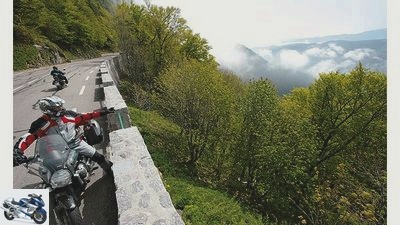
Breakable
Col panorama between the gorge and Hohneck.
Our sense of achievement is again the Col de la Schlucht and its brother, the Hohneck. A breathtaking panorama, especially the view of the Lac de Longemer. The restaurant on the Hohneck summit serves as a fixed point for entire BMW squadrons.
The Vosges heights appear rough, like Scottish high moors. Rusted lifts stand around like a skeleton. The touristically souped-up ski resorts of La Bresse and Geradmer radiate melancholy in summer, after all you can still hike or paraglide from here. Or wagging up passes like the Col du Haut de la Côte on a motorcycle and following white streets into nowhere.
Curiosity drives us across the Col des Croix towards the Plateau des Mille etangs, the area of 1000 lakes. Forest areas are thinning, mountains are becoming flatter, houses are poorer. We roam the lake area on the smallest of roads after we have felt our way from Melisey to La Lanterne et-les-Armonts. A Moselle glacier reshaped the southwestern edge of the Vosges 12,000 years ago. After it melted, it left behind countless streams, peat bogs and wild vegetation. The mana slips, we throw the head left and right. Large, small, dark, light lakes, hidden or open, raise the question of how they were created. The owner of the campsite in Fresse reports that in the Middle Ages monks dug numerous fish ponds in the damp depressions. Since then, the area has been providing horror stories due to the haze that rises from the ponds and the self-distilled that fog the brain.
We are reluctant to leave this treasure of the Southern Vosges, which has not yet been discovered by tourism, and drift further south until we reach another gem: the Notre Dame du Haut de Ronchamp church on the Bourlemont hill near Ronchamp, built in 1955 by the star architect Le Corbusier. It could go on forever with corner robbery and discovery, but unfortunately we have to go back to the hamster wheel of everyday desk life. But we are still here and are looking forward to the beautiful cols and balloons that spice up our return route. Speaking of seasoning: You can’t just rush past the Tarte flambee Munster, even in a northerly direction.
Info
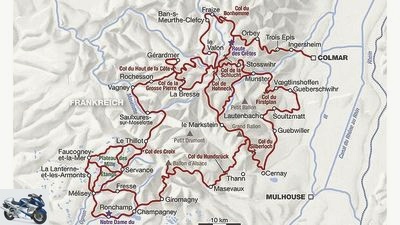
Drawing: archive
The through Alsace: Travel time: five days – Distance covered: 1100 kilometers
Alsace and Vosges, this is motorcycle country par excellence. Easily accessible, the region offers a wild alternation of peaks and valleys, further south the 1000-lake region beckons.
Arrival / travel time:
Coming from the north, you can already familiarize yourself with the region at Wissembourg, otherwise the entire A 5 from Baden-Baden to Basel is a good eastern entry line. Colmar offers the fastest connection to Munster, which is ideal as a base for exploring Alsace and Vosges. In contrast to the climatically not so harsh Black Forest, the ridge roads are not cleared of snow in winter, so that the first tours over the “Route de Crêtes”, which runs on the west side of the Vosges ridge just below the summit, can only be undertaken in spring from around mid-April. In autumn, due to the weather, the curtain often falls towards the end of November for a hearty Vosges tour.
Stay:
We recommend the traditional Hôtel de la Cigogne in Munster, 4 Place du Marche, F-68140 Munster, phone 0033 (0) 389 773 227, email hotelrestaurantlacigogne@wanadoo.fr, single rooms from 50 euros. The romantic campsite of Fresse on the D 97 is ideally suited as a location in the Plateau des 1000 etangs: Camping De la Broche, Route du Mont de Vaunnes, F-70270-Fresse, phone 0033 (0) 384633140, open from April 15th. until 15.10. overnight stay from 11 euros, caravan rental possible, swimming lake, very nice owner. There is no shortage of pensions and hotels along the rest of the route.
Maps / literature / tips:
Michelin map number 516 “Alsace, Lorraine”, Scale 1: 275000. Travel guide on the subject of Alsace / Vosges: Bruckmann’s motorcycle guide, Matthias Hepper, 12.95 euros, ADAC travel guide, Hans Gercke, 9.95 euros, Marco Polo travel guide, Jutta Hartlieb, 9.95 euros, Baedecker Allianz travel guide, Rainer Eisenschmid (Ed.), 17.95 euros. Numerous themed routes spice up Alsace / Vosges bike tours: Kasestrabe, Grune Strabe, Kirschwasserstrabe, Typical Village Road, etc. Tips: www.elsass-netz.de Also: www.les1000etangs.com.
Related articles
-
Access routes to Alsace and the Vosges
Tour tips Exclusive motorcycle tours for children to follow Presented by Printmaps.net/OSM Contributors, Harald Humke, Claudia Werel to travel Access…
-
Motorcycle tour in Vercors (France)
Jo Deleker 18th pictures Jo Deleker 1/18 Do you want to experience something other than Provence or the Western Alps? We have a tip: the region south of…
-
MOTORCYCLE tour tip – The Alsace gourmet tour
Tour tips Exclusive motorcycle tours for children to follow Presented by Jorg Kunstle to travel MOTORCYCLE tour tip – The Alsace gourmet tour MOTORCYCLE…
-
Out and about in the Cevennes (southern France)
Deleker 17th pictures Map: MAIRDUMONT / Claudia Werel 1/17 1500 kilometers were covered in ten days. Deleker 2/17 Meeting point: motorbikes in the small…
-
Motorcycle trip – spring tour of the Allgau lakes
markus-jahn.com 33 pictures markus-jahn.com 1/33 Spring tour of the Allgau lakes. markus-jahn.com 2/33 Spring tour of the Allgau lakes. markus-jahn.com…
-
MOTORCYCLE on the road: Palatinate Forest-Northern Vosges
Iron ham to travel MOTORCYCLE on the way: Palatinate Forest / Northern Vosges MOTORCYCLE on the way: Palatinate Forest / Northern Vosges Foray through…
-
Comparison test: Honda CBF 1000 Silverline, Suzuki Bandit 1250 S, Yamaha FZ1 Fazer
Jahn 22nd pictures Honda 1/22 Honda CBF 1000 Honda 2/22 Honda CBF 1000 Zdrahal 3/22 Presentation at the fair in Paris. Honda 4/22 Honda CBF 1000 Honda…
-
MOTORCYCLE tour tip – Vosges rustic tour
Tour tips Exclusive motorcycle tours for children to follow Presented by Jorg Kunstle to travel MOTORCYCLE tour tip – Vosges rustic tour MOTORCYCLE tour…
-
Endurance test Suzuki V-Strom 1000
MOTORCYCLE motorcycles Endurance test Suzuki V-Strom 1000 Endurance test Suzuki V-Strom 1000 Voltage source In 2002 the Suzuki V-Strom 1000 got off to a…
-
BMW S 1000 RR Isle of Man Edition
BMW 14th pictures BMW 1/14 The TT on the Isle of Man will be canceled again in 2021. BMW 2/14 BMW France is nevertheless launching a limited Isle of Man…